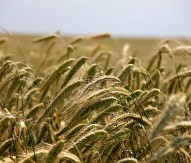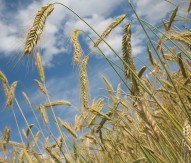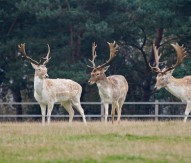
Profile: Ecological balance in a future warmer Arctic
Associate Professor Janne E Søreide, at the University Centre in Svalbard (UNIS), is leading CLEOPATRA II, an international research project studying climate impacts on Arctic marine ecosystems. She and her colleagues are studying small plankton organisms that form the basis of the Arctic marine food web.
Over the last three decades, sea-ice cover has been reduced by about 40% in the Arctic. The decrease in ice cover is accompanied by a significant reduction in sea ice thickness, an earlier sea ice break-up and a longer ice-free season. This leads to significant changes in underwater light climate and stratification and, ultimately, to changes in the primary production regime, with potential cascading effects upward in the food chain. A warmer climate with less sea ice also makes the Arctic more accessible for human exploitation of oil and gas, and new shipping routes. Arctic marine ecosystems are therefore threatened not only by climate change, but also by increased human disturbance and pollution.
Svalbard – a natural climate laboratory
Svalbard is situated in the dynamic transition zone between warm Atlantic and cold Arctic seasonal ice-covered waters, thus being an ideal place for climate research. Different climate regimes can be sampled within short distance from Longyearbyen, where the University Centre in Svalbard (UNIS), the world’s northernmost institution for higher education and research (78°N), is located. Since the first CLEOPATRA project was initiated during the International Polar Year (IPY, 2007-09), important seasonal information on the development of plankton communities in cold versus warm years has been documented. In warm years, we find a higher proportion of boreal species than ‘true’ Arctic species, but the plankton biomass is not necessarily higher than in cold years, when Arctic plankton dominates. Also in the future, the Arctic winter will be cold, dark and long, and act as a critical bottleneck for most boreal species. The plankton communities may therefore be reset ‘back to normal’ every winter, slowing down the ‘Atlantifiation’ of high-latitude plankton communities. Boreal plankton communities are much more diverse than Arctic ones, which are commonly dominated by a few highly specialised species. For instance, the Arctic copepod Calanus glacialis, endemic to the Arctic, comprises up to 80% of the zooplankton biomass in Arctic shelf seas. If this species fails to reproduce successfully in a future warmer Arctic, the consequences may be critical since boreal species may never be able to replace it due to the winter-bottleneck.
Calanus glacialis – a key species in the Arctic marine food web
In CLEOPATRA II, we study in detail the life history and physiology of Calanus glacialis. This large-bodied copepod is extremely lipid-rich (50-70% lipids of its dry weight) due to its ability to convert low-energy carbohydrates and proteins in algae into high-energy wax ester lipids. C. glacialis is therefore a crucial prey item for higher trophic levels, such as fish, whales and seabirds. This fat copepod ensures that the essential omega-3 fatty acids eicosapentaenoic acid (EPA) and docosahexaenoic acid (DHA), produced exclusively by marine microalgae, are efficiently chanelled to higher trophic levels in the food web. These omega-3 fatty acids play a key role in the reproduction, growth and physiology of all organisms in marine ecosystems, as well as for human health. The fate of this extremely fat and nutritious copepod in a warmer Artic is thus of vital importance to predict the vulnerability of Arctic marine ecosystems to climate change.

Copepod C. glacialis
Match or mismatch?
The evolutionary success of C. glacialis depends on its ability to synchronise its seasonal migration, reproduction and growth to the primary production regime in Arctic shelf seas. It survives the long and dark, food-poor winter by reducing its metabolism to a minimum. It can survive up to ten months without intake of fresh algal food by relying on its own large, internal fat stores. Warmer sea temperatures will increase this copepod’s metabolism and thus energy demand, which, during overwintering, may have negative implications for its survival and thus reproduction the following spring. This, in combination with drastic changes in sea ice conditions, will potentially lead to a mismatch between algal food availability and C. glacialis reproduction and growth.
New extensive laboratory experiments and field observations show, however, that this key copepod species is able to quickly respond to external light and food-cues while hibernating. This suggests that C. glacialis is more resilient to climate change than first anticipated. However, biomass hot spots of Calanus glacialis may disappear in the future since high biomass of C. glacialis is seldom encountered in warm years. Year-round investigations of plankton species survival, reproduction and growth are limited. This winter, CLEOPATRA II will start a new, intensive field and experimental campaign to investigate boreal species’ physiology and life history to determine their potential to survive the winter and successfully reproduce at high latitudes. This will move us one important step towards the answer of whom will be the ecological winners and losers in a future warmer Arctic.
Fact box:
CLEOPATRA II, funded by the Norwegian Research Council, project nr. 216537, 2012-2015, is headed by the University Centre in Svalbard (UNIS) and is one of several projects organised under the ‘Mare Incognitum’ project umbrella (www.mare-incognitum.no). International CLEOPATRA II partners are Germany (Alfred Wegener Institute, AWI), Poland (Institute of Oceanology, Polish Academy of Science, IOPAS) and Russia (Institute of Oceanology, Russian Academy of Sciences, RAS), while national partners include the Norwegian Polar Institute (NPI), Akvaplan-niva (APN), University of Tromsø (UiT) and the Arctos research network (www.arctosresearch.net).

Associate Professor Janne E Søreide
Dr Scient, Marine Biology
Department of Arctic Biology
University Centre in Svalbard (UNIS)
N-9171 Longyearbyen, Norway
+47 (0)7 902 3355




